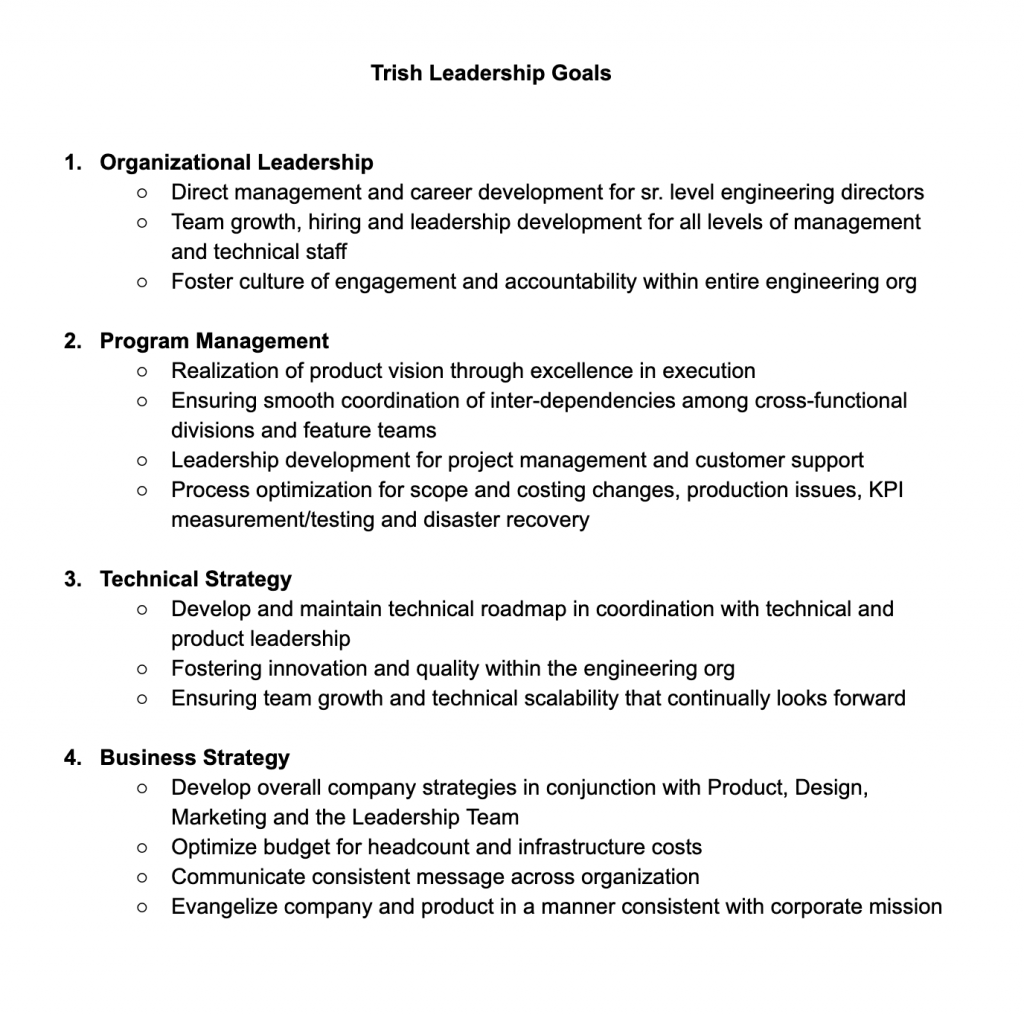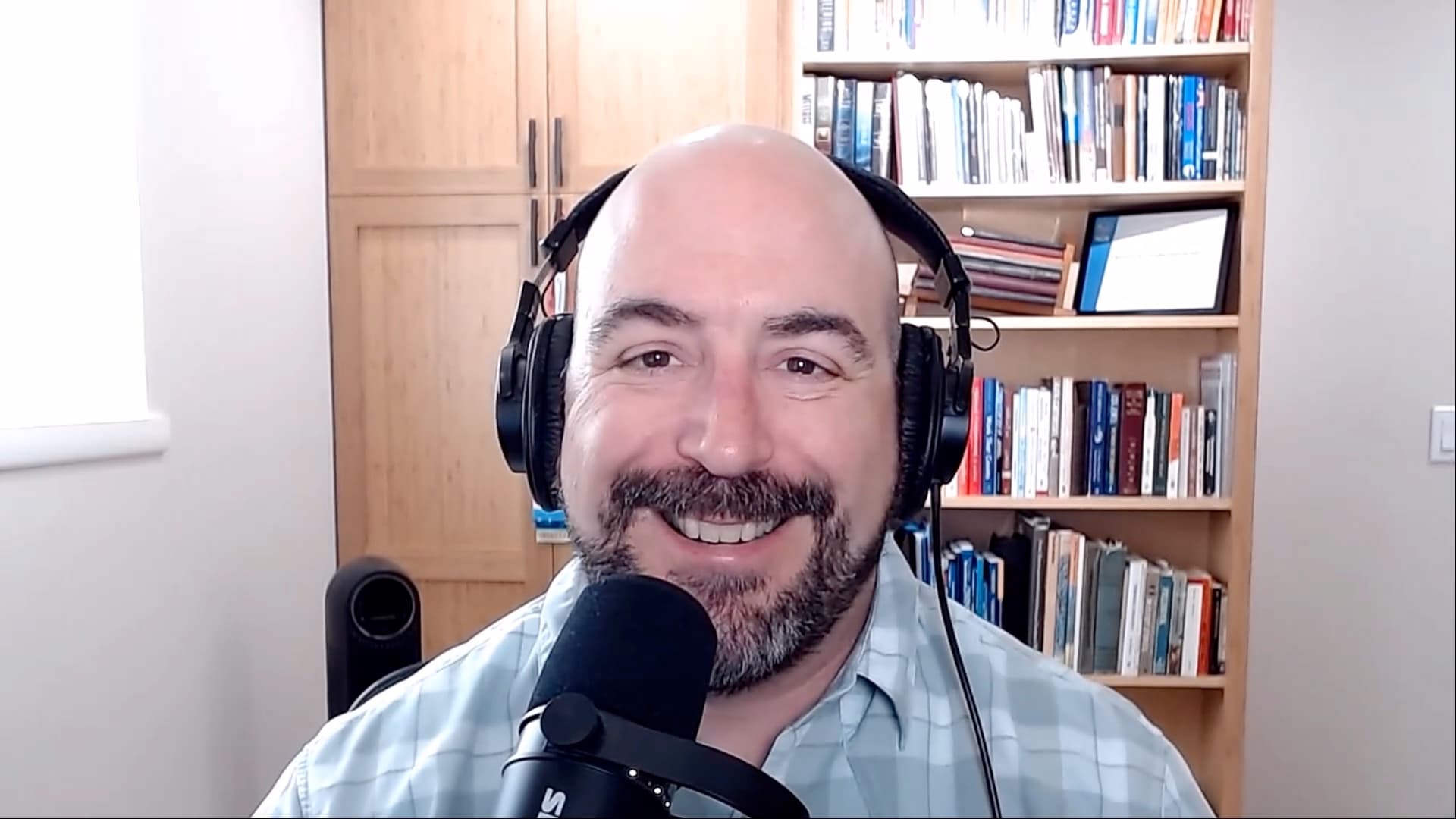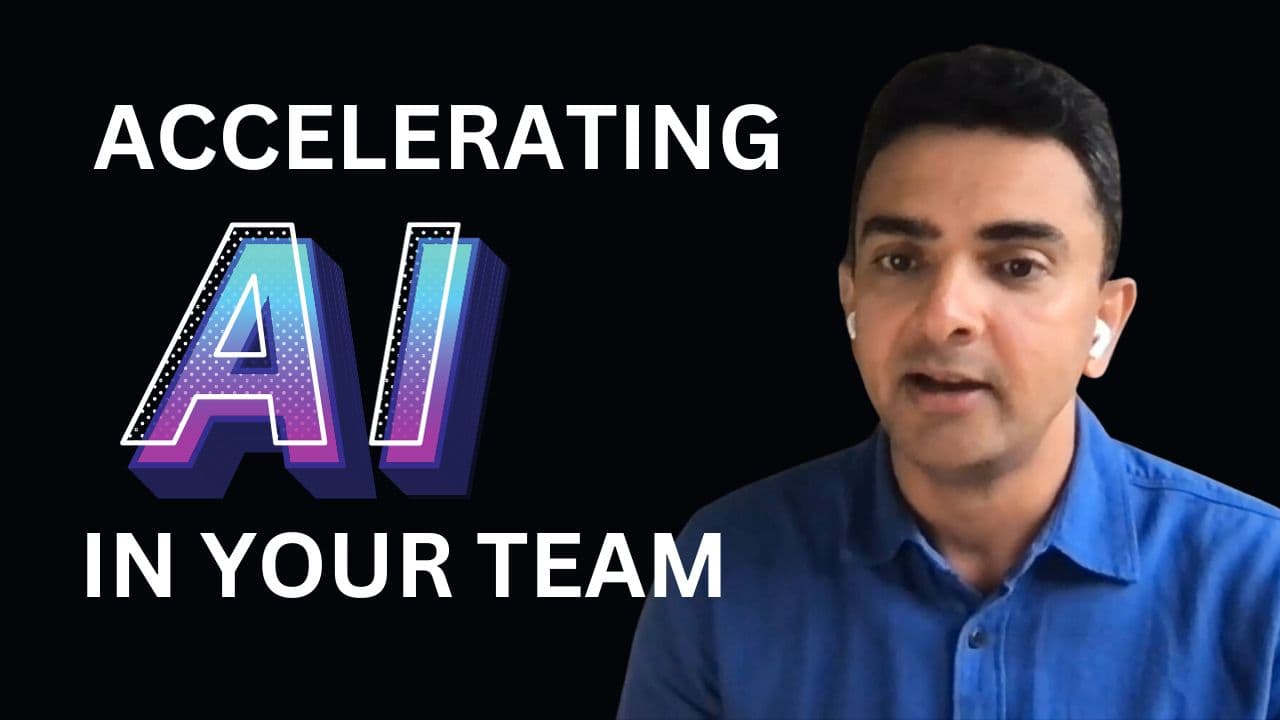Interview with Trish Gray, Head of Business Growth at Pinterest
Published on Apr 6, 2020
27 min read

Trish: Thanks, Vidal. It’s great to be here.
Vidal: Thanks. It’s great to have you. Trish, maybe we could start out a little bit … maybe you could tell people a little bit about your current role and what you do.
Trish: Yeah. Currently, I’m the head of business growth at Pinterest. Growth is a discipline that is emerging quite powerfully in the Bay Area regarding being the glue between engineering, product, marketing and business objectives. We’re in the business of creating those prototypes and really testing with an extreme data-driven approach utilizing a lot of user research, a lot of opportunity sizing, and other methods and disciplines in order to make sure that we’re maximizing all of engineering’s time and making sure that we’re creating features that we know have product markets that we know that are great for our users.
What’s your background and how did you get into management?
Vidal: All right. Awesome. Yeah, growth is super important. Trish, I was looking through your background on LinkedIn and you’ve had a long career in engineering leadership. You were Director of Software Engineering, VP of Engineering, Head of Business Growth, a bunch… Maybe you could speak a little bit about your background and how did you get into management? How did you transition in?
Trish: Yes. Yeah. I’ve done a little bit of everything. I started my career in computer science. I went to the University of Illinois at Urbana-Champaign for computer science. And while I was there decided to start a company for online education. At the time, I was just a coder. I’d been coding since I was 12. I loved coding. That was my thing. I had really no interest necessarily in being an entrepreneur, but that’s how it happened because we wanted to create the best learning system on the web in information technology.
Trish: We built what you could now call an online bootcamp a CodingDojo or a Hackbright Academy online but we were about 10 years ahead of our time. Worked on it for many, many years, made it into a school, had a lot of customer support. I created an online IDE system for learning. Also created a similar system for instruction and for creating instructional materials.
Trish: So that was my role. I was the coder, the technologist of the entire thing and how I got into management was simply by necessity. We were growing the business and I had to run multiple aspects of the business, and so I couldn’t be the only one coding anymore. Brought in a few folks, we were a very close-knit family so we learned it all together and that just grew from there.
Trish: So I don’t have a traditional trajectory into management but I will say that once we sold our company to O’Reilly Media, I had a mentor in the form of a director of HR that really taught me a lot about organizational development, performance management, and really just more of how complex management is and how it’s a completely different set of skills.
Trish: And I found myself really geeking out on it and very much enjoying it and realizing that if you really build management skills and you try to be the most effective manager possible, then not only does your business improve but you end up having this wonderfully healthy organization that is right there with you, mission-driven and excited to be working on the same things.
Trish: So built that up over several years at O’Reilly, and then when I stepped away I went straight into management after that at Expedia, but bringing my entrepreneurial aspect into it and growing the user-generated content division from one small team in San Francisco to several teams across San Francisco, Seattle, and Gurgaon.
Trish: That was my first foray into management without knowing everything about the code as I was used to knowing. I was used to knowing all the details and that’s where I had to learn about scaling and about really trusting the expertise of my engineers and my leaders within that.
Trish: So really appreciated that and got to know about culture and competencies. Expedia had a wonderful competency grid that I still use to this day and I really looked to Aman Bhutani who is now the CEO of Go Daddy as a mentor and a template for how I wanted to be an engineering leader.
Trish: From there, went on to Brigade, which is political startup started by Sean Parker through Facebook Causes, and I was the VP of Engineering there and that was a wonderful experience. It was a culmination of everything I had learned previously and I felt like I was able to up-level my skills, and together we were able to up-level the engineering organization in that way.
Trish: And then, led an acqui-hire of the entire engineering team to Pinterest, so I brought 19 of my friends with me to Pinterest and here I am.
What are the biggest challenges you face?
Vidal: That’s great. And I love how you say you were learning along the way and had mentors and you developed. It’s a great trajectory you’ve had. Could you describe maybe, what are the biggest challenges you face now as an engineering leader?
Trish: Yes. Lots of challenges in engineering management. I think it’s funny because I loved coding and sometimes I miss it but what I tell folks is that I replaced all of the complexities of coding and algorithms and architecture with what I call a 4D puzzle that is management.

Trish: When you’re leading an organization it’s not just about productivity. It’s not just about performance. You have to really be clear in your expectations. You have to set a culture. As you’re placing these challenges and expectations on your engineering teams, you also have to turn around and give them an air cover for them to be able to meet them.
Trish: They need to be able to do their jobs properly. So it’s my job to go around to cross-functional leaders, to other engineering leaders, to improve processes, to make sure that I’m evangelizing our team charters, making sure that they line up with company OKRs, making sure to keep the culture fun and intellectually challenging, working with my leaders to work smarter, not harder.
Trish: I spent many, many years working way too hard and I saw what kind of repercussions that can have, and so making sure that I am taking all of the work that my engineering team members are doing, and then reducing the gaps between those so that the operational efficiencies are as tight as possible.
Trish: That way, every hour of work that every engineer does is able to be that much more effective and have that much more impact. You can’t forget about the fun of it. Making sure it’s intellectually challenging for everyone. That’s a tough one. Things have to get done and you have to have your utility players and your specialists and it’s just like putting together an athletic team.
Trish: So being able to make sure that everyone feels like they have enough of a trajectory, everyone feels like they have a role to play and that they feel like they belong is incredibly important. Have to listen to the upward feedback that you get, and then ensuring that the budget is there so that when people do put all their heart and soul into this team that they rewarded for their performance and that they’re keeping up with market bands so that we can keep retention going.
Trish: So this is all a 4D puzzle that I work on. The higher you get up in management in the chain, the further out you have to look in the future to be able to plan for this organizational development while at the same time keeping up with adapting to the constant changes, for example.
Vidal: I love how you describe it as a 4D puzzle. Yes. I tell people managing people is so much more difficult than managing computers. It is so much more difficult. I’m-
Trish: Yeah, computers don’t care.
Vidal: Yeah.
Trish: They don’t have lives and livelihoods to deal with, right?
Could you share with us a lesson you learned as an engineering leader?
Vidal: Correct. Could you share with us a lesson, maybe a lesson you learned as an engineering leader?
Trish: Yes. I’ve found, over the years, that as an engineering leader I feel like I’m just there in service of the team. What I had to realize is I had to put myself, as time goes on, I have to put myself more and more in the heads of the team members that are working within my org, and realize just how much power I tend to wield in their minds.
Trish: And a funny anecdote with this is that while I was at Brigade there are Slack channels going back and forth. I’m always looking at the Slack channels. I’m always keeping track of how everyone is doing, what’s going on, if there are any challenges there.
Trish: And I remember this one time. I can’t remember the actual problem that they were trying to solve but I just piped in and said, “Oh, how about this idea? Maybe this could help.” What I didn’t realize was that the minute that I piped in, everybody dropped everything that they were doing to do exactly what I suggested right at that moment.
Trish: And that’s not what I meant to do. I was just, “Hey, hey everybody. Hey team. Here’s an idea.” And I didn’t realize that this would happen until a few of my leaders that I was talking to them and said, “Oh, Trish. We had so many things going on right then and everybody stopped everything they were doing for you.”
Trish: “Oh my gosh. I’m so sorry. I did not mean for that to happen.”, and I realized that, okay yeah, as VP of Engineering, if I was in IT and the VP of Engineering suggested something, I probably would have done the same thing.
Trish: So I had to be very, very careful to empower my team, to empower my leaders, and then get out of the way and let them do their work and not disrupt it. That was a big lesson for me in, A) letting go of details, and B) really being cognizant of how everyone is working day-to-day.
Vidal: I think that’s a great story. I can totally relate to it. When I had my startup and I would just offer, like you did this innocent suggestion, people would sometimes take it as this is the next project or strategic direction, or something. No, no, no, no. It’s just a suggestion.
Trish: Right. I can’t just walk in and set a land mine and let it blow up and then walk away. That’s just not going to be effective at all. So, that’s-
What’s your approach to hiring?
Vidal: I’d like to talk a little about hiring, recruiting. This is such an important part of an engineering leader’s job and it’s also very hard to recruit and hire these days. I’d love to hear your approach, your thoughts on this.
Trish: Oh my gosh. I have so many thoughts on this. First of all, it is a very, very tough market right now but that, to me, is a challenge that builds a muscle of being able to hire effectively and in a market like this you can’t be lazy about it. You can’t say, “Well, other people need a job so I have the job. Come to me.”
Trish: No, it’s not like that. First of all, I would say that I always start with a clear organizational strategy. If every role isn’t clearly defined then you might bring someone in opportunistically, and then that person is not in the right place. Right?
Trish: And that is not setting them up for success. You have to think about that first. And so, when I work with my engineering leaders a lot of times we’re hiring, I say, “Okay, let’s take an inventory of the current state of things within the organization as it stands today. Is there balance in the levels?”
Trish: “Do you have enough senior people, enough junior people, enough people in the mix so that everyone has a place to go in their next level? Are you stacking it way too top-heavy so that in that case you’re going to have too many people vying for the same tech lead position? You’re not going to be able to groom people properly.” So where are the actual gaps?
Trish: It’s not just about today and the projects that are happening today, and so we need someone who does mobile because we’re working on a mobile project right now. It’s about what’s going to happen in the future. We’re hiring someone full time, so that means that we want them to stay as long as possible. That means that you have to have something for them to do as long as possible.
Trish: And then, once you’ve figured that out, a lot of times you might find that there is someone internally that would actually be the best fit for that role and that gives them an opportunity to maybe to move upward.
Trish: Some of the biggest hits to morale in a team is when they’ve all been working and striving and feel like they have an upper trajectory, and then you hire from the outside to be their boss. Sometimes it’s necessary, but if it doesn’t have to be that way, I prefer it to not be that way.
Trish: Then you go from there to while all of this is happening you always want to work very closely with your recruiters, your recruitment staff and HR to ensure a massively strong pipeline. You can’t be thinking about diversity and inclusion as an afterthought. And when I say diversity, I always talk about diversity in thought. It’s not about demographics. It’s about the perspectives that people bring.
Trish: And so, making sure that you’re going out and not just plumbing the same sources for candidates. Going out to every angle, passive candidates, university candidates, bootcamp recruitment, diverse backgrounds, non-traditional candidates, meet-ups, events, those sorts of things, like the dinner, that really can bring forth a lot of opportunities for people to have different perspectives that you might really need at your organization.
Trish: Then after that, the hiring practice itself has to be so curated. You have to be incredibly calibrated on what every single interviewer is looking for, making sure there’s a balance in that so that you’re not looking for the same things over, and over, and over again. If you do that then the same candidates that come in with the same skills might get hired, but then you’re missing out on two other major sections of competencies.
Trish: A big example of that was there were a few calibration sessions that I attended where I found out that every single interviewer was looking for same specific technical skills, and so they got thumbs up for that, but then every single person also said, “Well, there was a little something off about the communication but I couldn’t quite put my finger on it and that’s not what I was looking for so I didn’t really ding them for that.”
Trish: And so, I had to say to the hiring manager, “Were there questions in place to delve into the communication issues to see how they work around conflict, how they work with people?”, and the answer was no. And so, everyone wanted to hire this person but there were major gaps in questions on how this person would come in. So, that’s something that we want to prevent.
Trish: We spend a lot of time calibrating on the interview day and, in fact, some of the questions that I give as a hiring manager are specifically to fill in those gaps.
Vidal: Okay, that’s great. So yes, you have to make sure ask questions, that you have good coverage of different areas, is what I’m hearing in that case.
Trish: Mm-hmm (affirmative).
What’s your advice for managers who are just starting out?
Vidal: All right. It’s hard to transition to being a manager from an IC, so do you have any advice for people who are just starting out as managers?
Trish: So, first of all, hopefully that new manager had someone grooming them to be a manager so that they could already have the skills in place by the time they become a manager. If I see someone on a management trajectory, years in advance I start giving them opportunities to mentor, start giving them opportunities to be a part of the hiring process and think about organizational development in that way.
Trish: And so that they don’t find themselves just suddenly they have direct reports and they’re not sure what to do, but unfortunately that happens more often than not, where a manager comes into a new management position and they think of it as just an extension of what they did as an IC, or a tech lead, but now they manage people.
Trish: And the worst attitude going into a new management position would say, “Okay, well I wanted to be manager because I wanted to have authority and be able to run the show.” Absolutely the wrong approach. This is a brand new set of skills. It is equally complex to anything you were doing as an IC and really, at this point, you have to start letting go of those details as an IC.
Trish: So if you’re doing it just to run the show and to be able to tell people how to do things, or how to write their code, then you’re doing it for the wrong reasons. I would say seek out mentors. Look at some of the best managers around you, and then don’t be afraid to grab some time with them, grab some coffee with them and just pick their brains. I always have a mentor.
Trish: Seize every training opportunity. Another mistake that I often see happening is that HR will come out with learning and development and say, “Hey, there’s these management courses, these leadership courses.”, and the problem is, everyone is busy, and they think of these courses and training as an afterthought. “Well, I’ve got too many things to do, I don’t have time to do this.”
Trish: It is paramount to you and your teams that you learn everything you can about how to run an organization, how to lead people properly, and how to plan for everything that I was talking about in that four-dimensional puzzle because it really is complex.
Trish: You wouldn’t go into a software development position without learning everything you can about web development, about the frameworks you’re going to be using, and the same is true for management.
Trish: And then, one thing I want to talk about is the idea of partnering with HR. Again, a lot of even organizations think of HR as this separate entity that come in twice a year and says, “Okay, we’re going to do performance reviews and this is how you do it.” And that is a disservice to you and a disservice to your teams.
Trish: Partnering with HR means making sure that you’re always in lockstep and alignment, with regards to setting your expectations and aligning those expectations and competencies to a calibrated set of expectations and competencies so that there is fairness across the board and that your own organization is set up for success, even in relation to other organizations within that org. They’re your friends.
Vidal: That’s great. I think that’s really great. And I love your answer about leadership and development training and making that a priority because it’s so easy to say, “Yeah, there’s no time for this training. I have to read this book.”, or whatever but it can be super-valuable.
Trish: Yeah, and not only that, knowing what to look for when there are problems, before they become a problem, are so important. You have to listen to that upward feedback. You can’t get complacent about, “Oh well, I’m a good manager.”
Trish: A big mistake I’ve seen with managers who’ve done it for years is that they would get some upward feedback from their team saying they’re just not happy with the goal-setting that’s happening and they’re frustrated with some things about it, and I would see sometimes just some blasé reactions to it saying, “Well, this person was just angry because of this one situation that happened.”
Trish: You can’t lose your humility when it comes to being a servant leader. It’s something that you never quite master.
Vidal: I think that’s great. Yes, being humble and knowing that maybe you’re not really the best manager and you have a long way to go-
Trish: But it’s-
Vidal: … so that’s great. Go ahead.
Trish: … teaching at every level.
What’s your workday like and how do you manage your time, emails, etc.?
Vidal: Yeah. So one of the challenges for managers, for everyone, is just time management. There’s so many things to do, so many meetings to go to, and emails and stuff, so I’m curious. How do you organize your workday, how do you manage your time, calendar, emails, and all that?
Trish: Yeah. My workday is full of meetings. I would say that it is never perfect, there’s always an asymptote that I’m reaching with regards to being more and more efficient in that way, but I use the same principles for myself that I’m going to use for my organization about working smarter and not harder.
Trish: I spend a good amount of my time really strategically curating my schedule. I am always looking at, first things first, my org comes first, and so my one-on-ones with my leaders and my skip levels, and the mentoring I do is very, very important.
Trish: I also, in that vein, I want to make sure that I’m not wasting their time, so I want to be prepared for those, so I do a lot of curation in that. I try to, just like with any IC, I try to make time for myself. At Pinterest we have a no-meeting Wednesdays policy that a lot of times it would be real easy to cut out that…
Trish: Each week, it gets real busy and, “Oh well, maybe I could just have this meeting on Wednesday or that meeting on Wednesday.” Being able to really try to be as consistent as possible over those make times and being possessive around those night times, I think is very important.
Trish: Carving out time to be creative. It’s very easy for me to fill every day with half hour blocks for eight hours at a time, and if I don’t have that make time to sit and think and say, “Okay, am I do right by my teams? What can I be doing to plan better? Am I giving enough education for folks? Do I need to be putting together a presentation?”, then that’s a disservice to them.
Trish: So that’s how I manage my time. With regards to my emails, I have categories that I do there. I try to just keep it at an inbox zero of at least read. It doesn’t necessarily mean that I have answered every single one of them I utilize the starring feature of mail as much as possible to make sure that if I go back that I’m following up on everything that I need to follow up on.
Trish: And then finally, just making sure that I have enough time to tie that with a bow so that I can move on and not have it be in the back of my mind constantly, because that can really get you on the road to just chasing your time, and then working too many hours to try to catch up on that.
Trish: So you find that if you block your time wisely and make sure you get it done in that block of time that you don’t find yourself working until two in the morning, necessarily. And I have to constantly remind myself of that.
Trish: My biggest issue is with PowerPoint presentations. When it comes down to me doing a presentation, and it could be a five slide presentation, it could be the simplest thing, but I find myself just obsessing on it and spending way too much time on it, and next thing you know I’m up until two in the morning doing that and that’s not smart.
Trish: So I have to remind myself to block off that time and use, I think it’s called the Pomodoro Method, where you say, “Okay. I’m going to work on this for an hour, and then at the end of that hour I’m going to put it down and then think about it later.
Vidal: Yeah. I think time boxing is what this is called too.
Trish: Yeah.
What’s a personal habit that contributes to your success?
Vidal: And I think that’s a very good technique. That’s great. What would you say is a personal habit that’s contributed to your success?
Trish: Yeah. Over the years I’ve had a saying of, the problem with having a can-do attitude is that you end up doing everything you can do and not everything you necessarily want to do or should do. And so, being proactive about that over the year is something that I’ve made a priority for myself.
Trish: I have a one-page document of what I call Trish’s leadership goals, and it’s basically four things that are my north star around organization leadership, program management, technical strategy, and business strategy. I take this document wherever I go, in whatever job I do, in whatever position I have so that I don’t find myself caught up in the minutia of that particular role.
Trish Leadership Goals on Google Docs
Trish: I want to make sure that I’m always keeping those four principles in mind, so then I utilize that. So I go into a new role. Okay, how do I get started? All right. Let’s look at my document, what do I need to be doing here? Okay, I need to be building relationships here, creating a SWOT analysis. Okay, now I need to create some goals around that. I’m going to create some goals around my own quarters.
Trish: So I always create my own goals proactively out of that. And I would say that has been the most successful habit that I have developed over the years because it’s allowed me to be more, I want to say, just cognizant and self-aware of how I’m progressing as a leader myself and the personal brand that I bring into my role.
Vidal: That’s a very awesome thing and I don’t think many people have that, this one-pager you’ve created. Do you share this one-pager with your directs, or with your manager, or?
Trish: Absolutely. Yeah, it is definitely not a secret, And when you look at it, it’s pretty common sense, but you can find yourself going down rabbit holes and not coming back to those very clear common sense principles so yeah, I share it with anyone who wants to see it.
Vidal: Oh great. Would you be willing to share it with people on the Manager’s Club?
Trish: Yeah, that would be great.
Vidal: Okay, awesome.
Trish: I will send it to you.
Vidal: Thank you. Wonderful, wonderful.
Trish: No problem.
Share an internet resource or tool that you can’t live without.
Vidal: So could you share if there is maybe an internet resource, website, or app, some kind of tool that you depend on, maybe you couldn’t live without to do your job?
Trish: Mm-hmm (affirmative). I’m definitely not one of those… There are folks that are so awesome at life hacks and efficiency hacks and they tend to be the first users of a brand new app. I’m way more old school than that. My resource that I can’t live without is just Google Calendar. It’s absolutely Google. If it’s not on my calendar, it doesn’t exist and I try to put as much information on it as possible.
Trish: I share it out. I have my personal calendar, I have my professional calendar, I have my calendar that I share with certain loved ones. I have to have my calendar rock solid, up to date, at all times.
Trish: First thing I do in the morning is I look at my calendar, the last thing I do at night is look at my calendar for the next day and make sure that I’ve mentally run through my day to say, “Okay, how is this going to go? Am I going to be able to be on time for all of these meetings?”, travel time, any of that is happening. Do I need to get a room for this.
Trish: All of those logistics, if they’re tightened down in my calendar then I have a very efficient day.
Vidal: Wow. That sounds… You’re very organized and very disciplined about your time. That’s great.
Trish: Thank you.
What’s your approach to mentoring and coaching members of your team?
Vidal: So I’ve been dying to ask you this question. When I first met you we were speaking and you were describing to me about how you do coaching and mentoring of your team, and it sounded like you had a really great process, and so I’d love if you could share with us, how do you approach coaching and mentoring people? And I think you have some forms, or something you follow.
Trish: Yes, so what I was just talking about with my own personal goals, and my own personal approach, having that north star. When I coach or mentor anyone, and I’m talking anyone from a director level leader down to a university recruit or an intern, it’s the same thing.
Trish: I say, “Okay, where are you trying to get to?” Honestly, pie in the sky. First thing I do is I put on my guidance counselor hat. Forget about being a manager, what do you want to do in life? Where is this going to go? And that might be an answer of, I’m not sure yet.”, and that’s okay.
Trish: But depending on what they tell me, then we can work on that and say, “Okay, let’s devise a plan.” It’s no different than devising a business plan when you’re an entrepreneur and saying, Okay, this is your personal brand, this is your personal trajectory in life. Now, based off of that, let’s work backwards from that.” Okay?
Trish: Here are things, now that you’re at this company, I can put on my management ha and say, “I’m going to try to match up the things that the company needs you to do with the things that you want to learn and do in your life.” They are not two separate things.
Trish: Sometimes mistakes I’ve seen with management is they just have someone working on whatever it is that they need to do for the team, and rather than matching that up, they’ll say, “Okay, maybe you can do this side project to learn this competency that you really want to learn.”
Trish: And that tends to be inefficient and a little bit of an afterthought that doesn’t really show the person in question how their own goals really apply to their career and how that goes.
Trish: So working backwards from that, then you say, “Okay, we’re going to get some goals for this entire year, and then we’re going to break that down into some goals and OKRs for this particular quarter.” And by goals and OKRs I mean anytime that you have a performance review, or things like that, I’m going to look at, A) what kind of impact you made for the company and for your team, but B) how you improved the competencies to get to the next level of where you want to go in your own career.
Trish: Those are two separate parts of the same thing. So we’re going to say, “Okay.” For instance, brand new university recruit comes in, no idea where to start. I say, “Okay, well what is it that you want to accomplish just in your mind?” “Oh, I want to really know the code. I want to really learn about how engineering works in this company and how to just be really effective in this team, and I want to just get to know other engineers and just make sure that I’m on the right track.” Okay, great.
Trish: In this quarter we put down, jot down, in this document two major goals, maybe we a stretch goal, okay? First one being, become a highly-skilled web engineer. Okay? Two being, become a highly-skilled growth engineer. That’s a different set of skills. It involves a lot of data analysis. It involves how to spot an opportunity, and then bring it through to experimentation.
Trish: The third one could be, start to gain some visibility with your peers. Okay? Well, these are great goals to have but a lot of times you don’t know really whether you’ve succeeded at that goal or not. Right? So there have to be deliverables that could really demonstrate that, “Okay. I’ve learned this skill. I’ve learned this competency.”
Trish: So we put down a couple of OKRs, a couple of deliverables. Okay? What would show for a brand new university entry-level recruit that they are becoming a more highly-skilled web engineer? You could say, “Okay. I have completed a project start to finish, or I have become the code reviewer for three or four code reviews.” Okay, great. That’s something that’s achievable, that is not overwhelming, but that very clearly shows that it’s something to strive for.
Trish: Same with the growth engineer part of it. In terms of the visibility, it could be something as simple as I’ve given a presentation to experiment review around an opportunity that we’ve sized and brought to ship or shut down. Okay? So, that’s something that we can do.
Trish: So I work with them very closely on that, or I work with my leaders to do that with them. Now, in terms of how they’re progressing towards their level and to the next level, I have a competency grid that I refer back to. And that competency grid, I’m not going to lie, stole it straight from Expedia.
Trish: They have a wonderful competency system. It’s very simple. It basically breaks down competencies into three categories. Adding business value, communication, and helping the team win. And then, the other part of the grid is what level you’re at. If you’re a basic IC, or a management or tech lead level, or an executive level.
Trish: And based off of that it just shows how you would demonstrate that you’re at a certain level in a certain competency. And so, I use that as a north star for them to say, “All right. Are we matching up these deliverables with where I want to see you?”, because you might be an entry-level right now but we’re already working towards that next level. I’m going to be challenging you towards that next level.
Trish: So we go based off of that, and then after those quarterly goals are established, then I have a monthly check-in system that I use with a Google Form that we devise together with my HR partner at Brigade that every month, ask certain questions that are pretty open-ended. They are, what were your proudest accomplishments last month? What do you feel you could have improved upon last month? How do you feel you’re progressing towards your long term goals?
Trish: And then, we look at last month’s deliverables versus this month’s deliverables. Okay, How did you do on last month’s deliverables? And then, what are two to three deliverables for this month that you want to accomplish to achieve these goals?
Trish: And so, it’s everything starting from pie in the sky, breaking it down very methodically to, “Okay, now I know what to do this month.” Okay? Which helps them to break it down in their mind of, how do I want to spend my time every week?
Trish: Now, where I find this to be the most crucial is at the tech lead level. Once someone gets to that IC to tech lead level, they have a much, much harder time really prioritizing their own time. They have so many responsibilities at that point, and they so want to understand every single detail of everything, that this is the method that I use to get them to let go of those details and really prioritize their time in the smartest way possible.
Trish: I’ve seen so much success from this. I’ve seen people progress so much faster than they would just organically. And it’s great because even if they get to a point where it’s time for them to go somewhere else, then I can put that guidance counselor hat back on and say, “Hey, do you feel like you have all the tools that you need for this next position?”
Trish: And that’s why I’m able to keep these really strong relationships and mentoring throughout my career. I still have great relationships with bunches and bunches of my old teammates and direct reports. And it’s just great to see how their trajectory grows, even beyond my working with them.
Vidal: Wow, Trish. This is just dynamite. I’ve asked this question to a lot of people and this is an amazing answer you’re giving, with a lot of specifics. I love this monthly form idea you have. I’ve never seen that but I want to try that. That’s great.
Trish: Yeah. I can’t take full credit for the form. I had a wonderful partner, his name is Jefferson, who I’m still in contact with who worked this form with us so yeah, it’s been wonderful.
Vidal: Yeah, you should write about this. This sounds like you have a very strong process that’s very well thought out. So, great.
Trish: Yeah, I have a huge passion around manager effectiveness. I feel like really solving the problem of manager effectiveness can solve so many other problems. And so, that’s what I tend to focus on. Huge passion.
Where can we go to learn more about you? (e.g., LinkedIn, Twitter, Blog, GitHub, etc.)
Vidal: Wow. All right. Well, Trish, you have been super-generous with your time. You shared a tremendous amount of valuable information. Where can people go if they want to learn more about you, read about you?
Trish: Yeah. I think the main thing is LinkedIn. I don’t have a Twitter account, and I don’t have a blog, but I would love to hear from anyone who has any questions. My LinkedIn account is just under Trish Gray, so linkedin.com/in/trishgray, G-R-A-Y.
Trish: And Vidal, I really appreciate the opportunity to talk with you about these things. I just hope that your wonderful podcast can up-level management skills across the board. I really think that you have a valuable thing going on here.
Vidal: Thank you so much. And thank you for your help today in sharing this. I think it’s going to be an inspiration for a lot of people to hear your episode and read the transcript, so thank you, Trish.
Trish: All right. Take care. Have a great day.







